Utah's national historic Landmarks give a sundry look at the state's history, from the bustle of Temple Square in downtown Salt Lake City, to more desolate sites like Danger Cave.
The 14 landmarks might not be as well known as the Beehive State's five national parks and slew of monuments — but each add knowledge of the struggle, triumph and wonder etched into the timeline of Utah.
Check out the history and information for visitors of each National Historic Landmark below.
Danger Cave
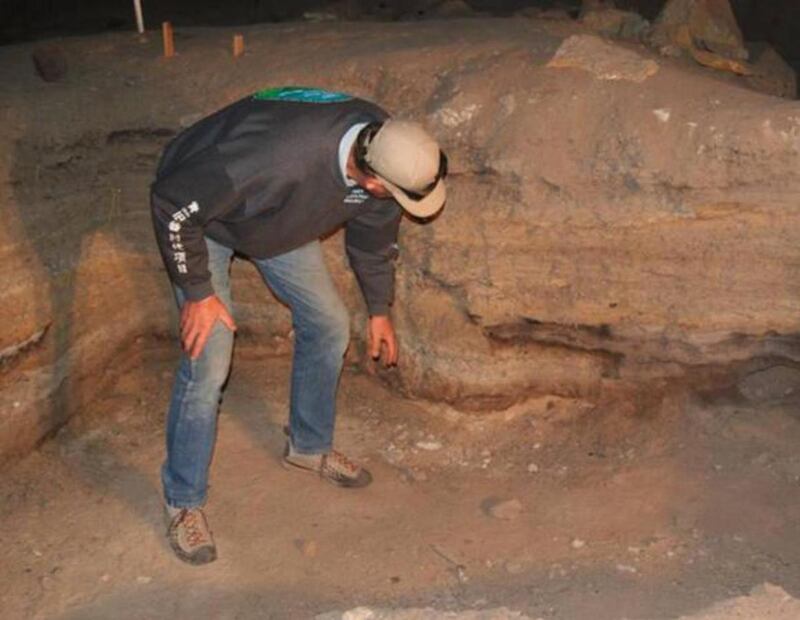
Retired state archaeologist David Madsen examines the layers in Danger Cave that tell the history of its ancient inhabitants, Monday, May 23, 2011. | Deseret News archives
Designation date: Jan. 20, 1961
Location: Tooele County
It takes some planning to see the remote desert cave that includes evidence of humans going back 13,000 years — it's typically opened just once a year, according to the Associated Press.
Danger Cave is well-preserved, but if you can't make it, some of its artifacts are on display at the Utah Museum of Natural History.
The cave was formed by wave action underneath Lake Bonneville, and early people in the area, which is close to the modern city of Wendover, lived inside it during winter months once the lake started receding, according to KSL.
Why the name? Huge boulders fell from an overhang above the cave, creating a near-death experience for archaeologist Elmer Smith and his crew as they took a lunch break from exploring in 1941.
Visitor information is available at the Utah State Parks website.
Emigration Canyon
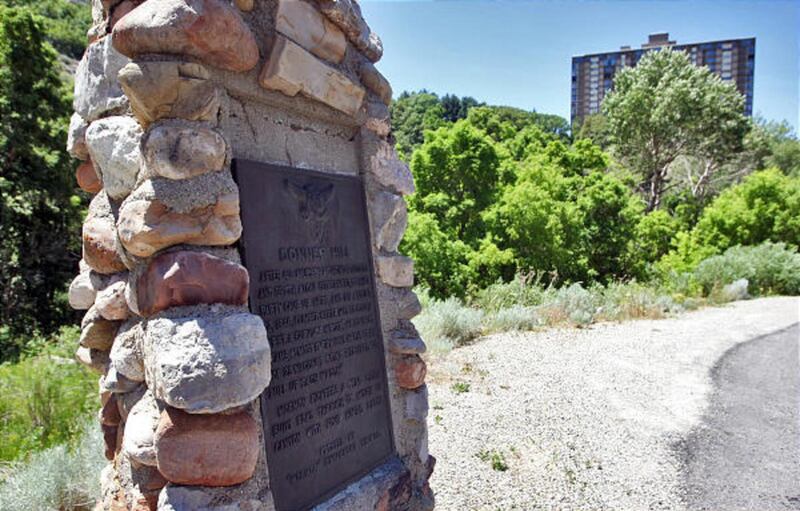
The Donner Hill marker east of Salt Lake City notes that the Donner-Reed wagon party passed through Emigration Canyon in 1846 during the group's ill-fated journey. | Jason Olson, Deseret News
Designation date: Jan. 20, 1961
Location: Salt Lake County
Brigham Young led a wagon trail down this 9-mile-long, 2-mile-wide stretch of forest, brushy hillside and canyon into the Salt Lake Valley on July 24, 1847, according to the Deseret News.
The Donner Party had embarked through the same stretch a year prior; Forty-Niners would two decades later, giving "Emigration Canyon an honored spot in Utah history," according to Deseret News.
A township was formed in 1997, and there are rock climbing routes in the canyon.
Visitor information for cycling in Emigration Canyon can be found at the RootsRated website.
Brigham Young Complex

Lion House when it was being used by LDS University (Latter-day Saints College). Salt Lake Temple can be seen in background because Hotel Utah and Church Administration Building had not been built yet. | Courtesy Church History Library
Designation date: Jan. 28, 1964
Location: Salt Lake County
The Beehive House in downtown Salt Lake City served as President Brigham Young's main residence from its completion in 1855 until his death in 1877, according to the Deseret News.
From his office there, Young served in many capacities: president of The Church of Jesus Christ of Latter-day Saints, territorial governor and superintendent of Indian affairs, as well as a husband and father.
The Lion House was constructed right next door in 1856. Among myriad other uses throughout the decades was one in particular that might surprise LDS Church members, the Deseret News quoted Brittany Chapman Nash, a historian with the Church History Library, as saying.
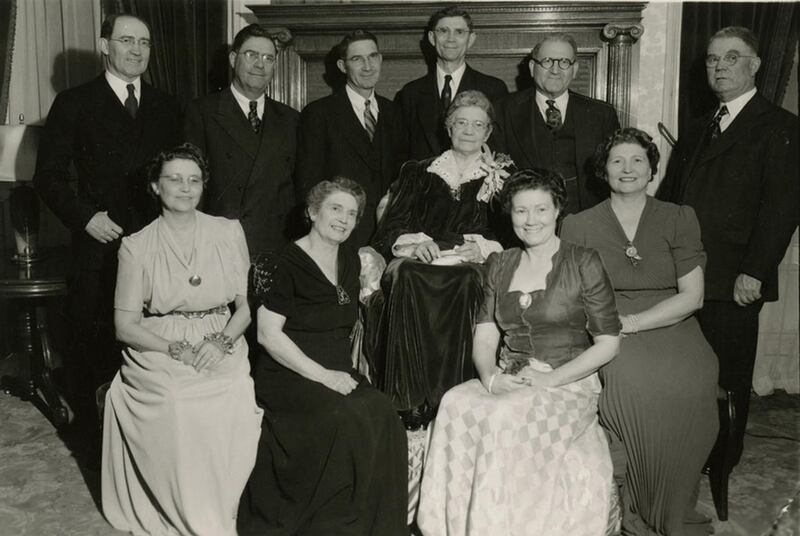
Ruth May Fox celebrating her 90th birthday in the parlor of the Beehive House. She was the third general president of the Young Women organization of the Church from 1929 to 1937. | Courtesy Church History Library
"The Lion House has always had special significance to the Young Women organization, because … that is where the Young Ladies’ Department of the Ladies’ Cooperative Retrenchment Association was founded in 1870, now, of course, called Young Women," Nash said. "In 1931, 61 years after the creation of the association, the Lion House was soon to be inextricably tied to the Young Women program like never before, a tie that is little-remembered today."
The Beehive House is a visitor attraction and the Lion House a restaurant and reception center today.
Information can be found at the Temple Square website.
Temple Square
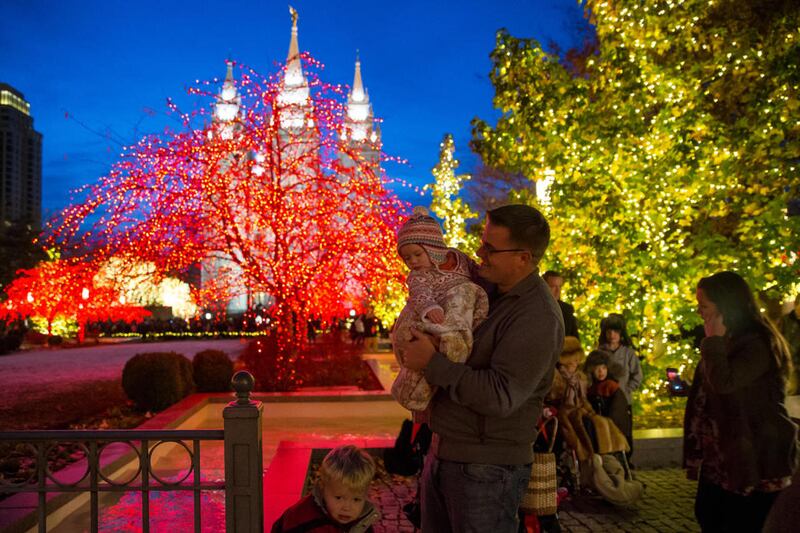
Justin Hansen, of Salt Lake City, his daughter, Lettie, 8 months, and other family members tour the Christmas lights at Temple Square in Salt Lake City on Friday, Nov. 25, 2016. | Spenser Heaps, Deseret News
Designation date: Jan. 29, 1964
Location: Salt Lake County
Historic Temple Square is Utah's most popular man-made tourist destination, according to the Deseret News — and its appeal draws visitors just about any time of year.
The 35-acre square offers cultural events, dining options and genealogical research, the Deseret News reported. During winter, Temple Square is a place to see hundreds of thousands of Christmas lights from late November until Jan. 1.
"In addition to the lights, Christmas music, unique Nativities from cultures around the world and luminarias fill the square," the Deseret News reported. "Other events attract visitors to Temple Square — the 'Savior of the World' production, the First Presidency’s Christmas Devotional, the Mormon Tabernacle Choir Christmas Concert and the annual Latino Christmas concert — and will take place leading up to Christmas."
Information is available at the square's website.
Alkali Ridge
Designation date: July 19, 1964
Location: San Juan County
The archaeological remains contained at Alkali Ridge include pit dwellings — considered the "earliest forms of Ancestral Puebloan architecture," according to the Society of Architectural Historians.
The site also features traces of a village incorporated into the cliffs. The society noted other qualities that show how members of the ancient society in northern San Juan area lived.
"At Alkali Ridge there are faint marks of an ancient road, likely a trade route that connected this settlement to trading and cultural partners beyond," according to the Society of Architectural Historians.
The Deseret News reported of another pleasant finding at Alkali Ridge: chocolate residue dating back to 750 A.D. on ancestral Pueblo potsherds.
Information can be found at the Natural History Museum of Utah website.
Bingham Canyon Open Pit Copper Mine
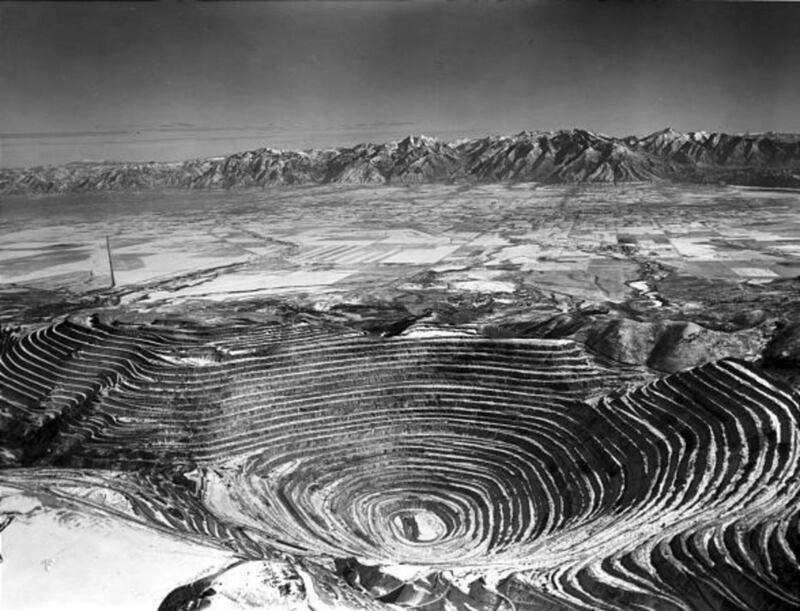
An aerial view of the Bingham Canyon Mine taken in the winter of 1963. | Deseret News archives
Designation date: Nov. 13, 1966
Location: Salt Lake County
At 2 1/2 miles wide and three-quarters of a mile deep, the mine once accounted for 11 percent of the total employment in Utah and produced 30 percent of copper used by the allies in World War II, according to the Deseret News. Even a massive 2013 landslide only stopped production briefly.
The Bingham Canyon Mine is also one of the few artificial structures that can be seen from a space shuttle, the Deseret News reported. And even though the first year of digging was 1906, the canyon's history dates back to the days of pioneers.
"The canyon is named for Thomas and Sanford Bingham, who were instructed by Brigham Young to settle there shortly after the Mormon pioneers arrived in Utah," according to the Deseret News. "The brothers prospected a little, but Young urged the early pioneers to spend their time farming, not mining."
Information and a virtual tour can be found at the Rio Tinto Kennecott website.
Desolation Canyon

The Upper Desolation Canyon area is one of the largest blocks of roadless BLM lands in the U.S. | Tom Smart, Deseret News
Designation date: Oct. 18, 1968
Location: Carbon, Emery, Grand and Uintah Counties
One of the largest blocks of roadless BLM lands in the U.S., Desolation Canyon offers families a chance to canoe, seeing "uncommon beauty" along the way, according to the Southern Utah Wilderness Alliance in the Deseret News.
John Wesley Powell's descent of the Green and Colorado Rivers in 1869 and 1871 popularized the canyon, according to rafting company O.A.R.S.
Hiking, viewing ruins and camping on beaches can complement a trip there.
Read former Deseret News photographer Tom Smart's account of a harrowing horseback ride in Desolation Canyon here.
Information can be found on the Recreation.gov website.
Fort Douglas
Designation date: May 15, 1975
Location: Salt Lake County
Fort Douglas was founded in 1862 to guard the Overland Mail route during the Civil War — and to keep an eye on Mormon settlers — according to the Deseret News.
The site was meant to be temporary; however, it became a "lasting enterprise" by changing as the needs have. Some of its original land was given to others once it was no longer needed for military purposes.
Now, a portion of the fort is now used as a military museum. Visitors can take both a virtual and walking tour, according to the University of Utah.
Read why some people believe the site might be haunted here.
Information can be found at the Fort Douglas website.
Old City Hall
Designation date: May 15, 1975
Location: Salt Lake County
The hall was first located in downtown Salt Lake City and served as a city and territorial government office, according to Ski City.
Moved in 1960 to south of the Capitol Building, the hall now houses the Utah Office of Tourism and the Zion Natural History Associated bookstore and visitors' center.
Visit the Utah Office of Tourism website for information.
Reed O. Smoot House
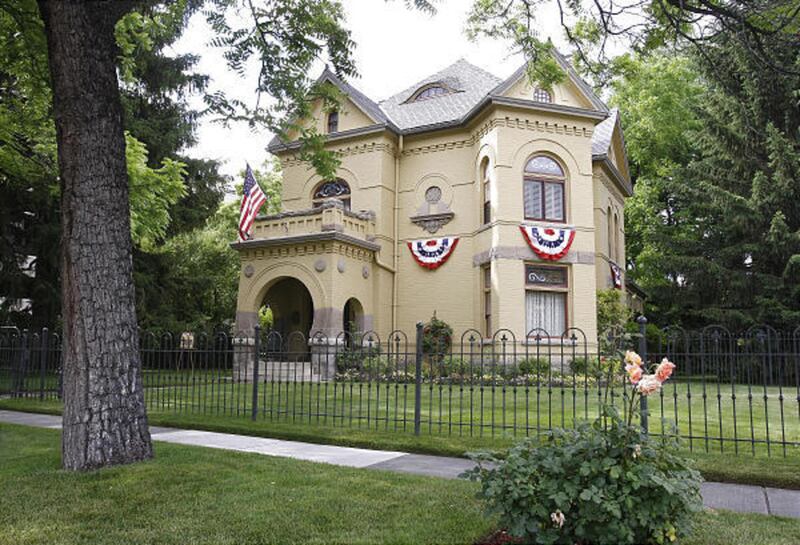
The dining room of the Reed Smoot home. The home was built in 1892 and is now on the Freedom Festival's Provo Historic Tours. | Stuart Johnson, Deseret News
Designation date: Dec. 8, 1976
Location: Utah County
Born in Salt Lake City in 1862, Reed Smoot was the first native-born Utahn to have a national political reputation and the only LDS apostle to hold a national elected office, according to the Deseret News.
It was the approval of President Joseph F. Smith that encouraged Smoot to run for Senate, and the Deseret News noted the obstacles he faced before ultimately serving five terms.
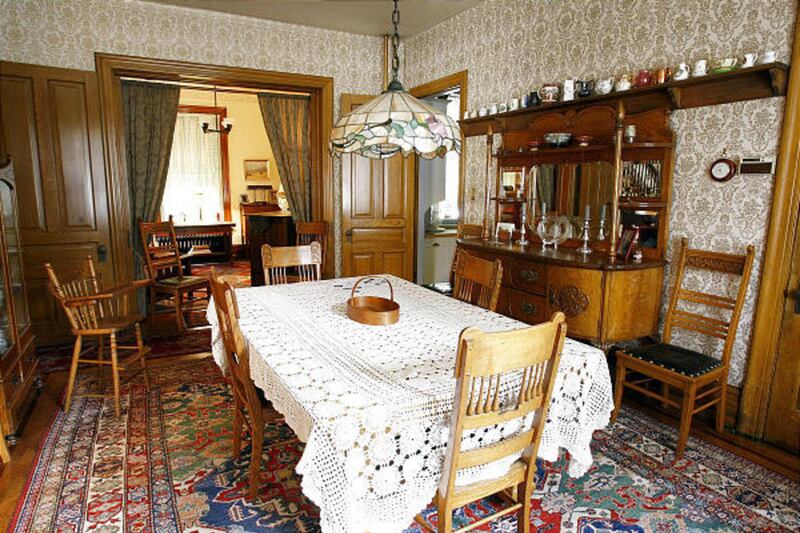
The dining room of the Reed Smoot home. The home was built in 1892 and is now on the Freedom Festival's Provo Historic Tours. | Stuart Johnson, Deseret News
"His election by the Utah House of Representatives — senators were not selected by popular vote until 1911 — set off a firestorm of controversy," according to the Deseret News. "It would be four years and require numerous hearings in which the beliefs and practices of the LDS Church were aired on the national stage, before Smoot was allowed to take his seat in the Senate on Feb. 20, 1907."
Smoot and his family called a yellow brick house on 100 South in Provo home. Care of the home since Smoot died in 1941 has spanned generations of the Smoot family, according to the Deseret News.
Information can be found at the Utah Heritage Foundation website.
Bryce Canyon Lodge and Deluxe Cabins
Designation date: May 28, 1987
Location: Garfield County
The original core of the lodge was built in 1924, and it and its 15 deluxe cabins are just one-eighth of a mile from the rim of Bryce Canyon, according to the National Park System.
Visitors of Bryce Canyon National Park can stay at the lodge and cabins during their stay, with dining options and a general store close by.
Information can be found at the Bryce Canyon website.
Quarry Visitor Center
Designation date: Jan. 3, 2001
Location: Uintah County
The center serves as a "gateway to the Quarry Exhibit Hall and the world famous wall of dinosaur bones" and is located seven miles north of Jensen, Utah, according to the National Park Service.
Dinosaur enthusiasts can make the trip from the visitor center to the exhibit hall by shuttle in the summer to witness a collection that includes the remains of species like Allosaurus, Apatosaurus, Camarasaurus, Diplodicus and Stegosaurus, according to NPS.
Operating hours and directions are on the NPS website.
Topaz War Relocation Center

The memorial site at the World War II Japanese-American Topaz Internment Camp. The internment camp site is located about 15 miles from the newly remodeled Topaz Museum in Delta, which commemorates survivors of the camp. | Kelsey Brunner, Deseret News
Designation date: March 29, 2007
Location: Millard County
President Franklin Roosevelt signed Executive Order 9066 in 1942, and over 11,000 Japanese Americans were processed through Topaz internment camp until its closing in 1945, according to the Topaz Museum website.
Located about 15 miles from Delta in central Utah, the newly remodeled Topaz Museum opened in July.
"The museum pays tribute to the over 11,000 people who were processed through Topaz between 1942 and 1945 and serves as a physical reminder to the injustices they endured, from losing homes, businesses and possessions to the blistering heat and freezing cold of the Utah desert," the Deseret News reported.
Operating hours and directions are on the Topaz Museum website.
Mountain Meadows Massacre Site
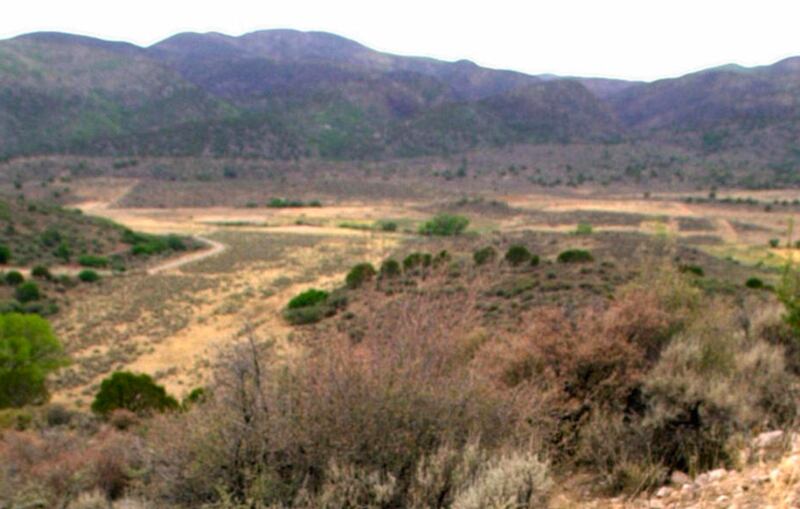
In this July 17, 2002 file photo, a marker describes the Mountain Meadows burial site which is in the valley, at rear, in Mountain Meadows, Utah. | Douglas C. Pizac, File, Associated Press
Designation date: June 23, 2011
Location: Washington County
Utah's most recent place to be named a National Historic Landmark is the site of a 1857 massacre that culminated a four-day standoff between local members of The Church of Jesus Christ of Latter-day Saints and a wagon train of Arkansas immigrants making its way to California, according to the Deseret News.
The 760-acre site where 120 emigrants were killed by a group of armed Mormon militiamen was dedicated on Sept. 11, 2011 — exactly 154 years after the massacre, the Deseret News reported.
"This very human element of the massacre story and all of the unmet expectations and suffering it encompasses tugs at my heart strings most of all," said Elder Marlin K. Jensen, LDS Church historian and recorder and a member of the First Quorum of the Seventy. "It compels me to say today just how sorry I am for what happened here so long ago, a feeling shared by all the leaders of our church."
The site is located in a mountain valley about 35 miles southwest of Cedar City, according to Mormon Newsroom.


















































